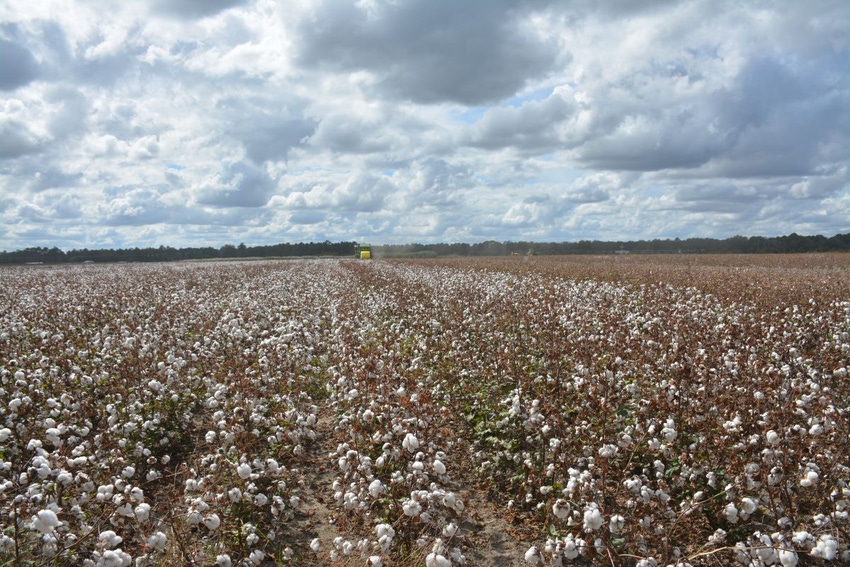
“During boom times, cotton consumption picks up,” says Texas A&M's John Robinson. “Today, it's a mixed bag. You'll hear a good jobs report, then a bad jobs report, GDP predicted to be higher or lower. But, generally, I would categorize it as we're sort of limping along. We need something to pull cotton prices up, something based on the demand side. I don't see anything doing that so far.”
October 27, 2015

Four or five years ago UGGS boots were the rage for college-age and teen-age girls. You couldn’t go anywhere, particularly in the Midwest, without seeing the boots with the distinctive narrow band of wool on their tops.
Because of the UGGS craze, wool prices went through the roof and the American Sheep Industry Association actually began conducting seminars to try to interest more people in raising sheep to help meet the demand.
Cotton producers need an UGGS boot or some other new hot fashion item to help increase demand and move cotton futures prices out of the narrow trading range of 60 and 67 cents per pound they have found themselves in over the last 12 months, says Texas A&M University’s John Robinson.
Dr. Robinson, a professor and Texas AgriLife Extension economist in the Department of Agricultural Economics at Texas A&M, was the presenter at the University of Arkansas Division of Agriculture’s Food and Agribusiness Webinar Oct. 22. (To watch his presentation, click on http://www.uaex.edu/farm-ranch/economics-marketing/food-agribusiness-webinars/posts/10-22-15-john-robinson-cotton-market-webinar.aspx
“During boom times, cotton consumption picks up,” he says. “Today, it's a mixed bag. You'll hear a good jobs report, then a bad jobs report, GDP predicted to be higher or lower. But, generally, I would categorize it as we're sort of limping along. We need something to pull cotton prices up, something based on the demand side. I don't see anything doing that so far.”
For many years, cotton production and consumption in the world tracked each other, says Robinson, who formerly worked as the Extension cotton marketing specialist at Mississippi State University.
Explosion in late 90s consumption
“I like to point out to grower audiences that this explosion in world consumption that began to occur at the end of the 1990s probably kept U.S growers in the cotton business,” says Robinson. “It continued throughout the decade thereafter, and it peaked in 2007. And it's largely due to things beyond the farm gates.”
The explosion occurred because of the liberalization of world trade in textiles. “It's associated with a shift of textile production from the U.S. to Central America to Asia,” he said. “And it's due to the expansion of textile production in efficient places where labor costs were cheap and where textile mills were brand-new and using the latest technology.”
Currently, growers are coming out of the effects of what happened a few years later in 2010 and 2011 when cotton prices spiked over $2 per pound in this country and higher than that overseas “The world reacted to that price spike in a predictable fashion,” Robinson noted. “Growers around the world expanded production, and cotton mills around the world cut back.
“They either went bankrupt, they just used less cotton or they used polyester. Cotton consumption declined and cotton production expanded, and you had this gap between the two. And this gap led to the buildup of surpluses around the world that are still with us, mainly in China but also in India.”
There are reasons for hope. USDA is forecasting that for the first time in five years the world is using more cotton or about 5 million bales more cotton than it will produce. “So USDA and others are projecting that this gap is going to close,” he notes. “And not only is it going to close but we're going to be starting to whittle away at the excess surplus inventory that's built up over time.”
Prices respond to sales
It’s a slow process, he notes. “When prices get up to the upper level, above 65 cents, we've seen export sales drop off. And that's a bearish signal. And so after export sales drop off, usually prices come back down.
“So when prices get down to the lower end of that range, down to 63 or 62 or 61, then we usually have a spike in export sales. And that's a bullish indicator. And that tends to pull the market back up. What this basically means is that we have had a range-bound movement of prices for 12 months.”
Thus, prices have been capped by the demand response. “And until something really changes, I don't expect prices to break out of this range unless we either see stronger and stronger demand at higher prices or the reverse of that,” says Robinson. “The long and the short of it is the export numbers -- the sales numbers tend to show what we expect from economics in that it fluctuates and responds to prices.”
To learn more about the University of Arkansas Food and Agribusiness Webinar Series, visit http://www.uaex.edu/farm-ranch/economics-marketing/food-agribusiness-webinars/
About the Author(s)
You May Also Like





